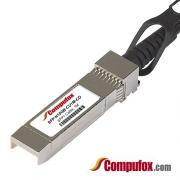Identify Types of Network Cables and Connectors
There are three types of network cables: fiber, twisted pair, and coaxial.
Fiber is the most expensive of the three and can run the longest distance. A number of types of connectors can work with fiber, but three you must know are SC, ST, and LC.
Twisted pair is commonly used in office settings to connect workstations to hubs or switches. It comes in two varicties: unshielded (UTP) and shielded (STP), The two types of connectors commonly used are RJ-11 (four wires and popular with telephones), and RJ-45 (eight wires and used with xBaseT networks—100BaseT, 1000BaseT, and so forth). Two common wiring standards are T568A and T568B.
Coaxial cabling is not as popular as it once was, but it's still used with cable television and some legacy networks. The two most regularly used connectors are F-conectors (television cabling) and BNC (10Base2, and so on).
Fiber
Fiber-optic cabling is the most expensive type. Although it's an excellent medium, it's often not used because of the cost of implementing it. It has a glass core within a rubber outer coating and uses beams of light rather than electrical signals to relay data. Because light doesn't diminish over distance the way electrical signals do, this cabling can run for distances measured in kilometers with transmission speeds from 100 Mbps up to 1 Gbps higher.

Often, fiber is used to connect runs to wiring closets where they break out into UTP or other cabling types, or as other types of backbones. Fiber-optic cable can use either ST, SC, or LC connector. ST is a barrel-shaped connector, whereas SC is squared and easier to connect in small spaces.The LC connector looks similar to SC but adds a flange on the top (much like an RJ-45 connector) to keep it securely connected.

Note: In addition to these listed in the A + objectives, other connectors are used with fiber. FC connectors may also be used but are not as common. MT-RJ is a popular connector for two fibers in a small form factor.
Twisted Pair
There are two primary types of twisted-pair cabling (with categories beneath cach that are shielded twisted pair (STP) and unshielded twisted pair (UTP). In both cases, the cabling is made up of pairs of wires twisted around each other.
UTP offers no shielding (hence the name) and is the network cabling type most prone to outside interference. The interference can be from a fluorescent light ballast, eletrical motor, or other such source (known as eletromagnetic interference [EMI]) or from wires being too close together and signals jumping across them (known as crosstalk), STP adds a foil shield around the twisted wires to protect against EMI.

STP cable uses IBM data connector (IDC) or universal data connector (UDC) ends and connects to token ring networks. While you need to know STP for the exam, you are not required to have any knowledge of the connectors associated with it. You must, however, know that most UTP cable uses RJ-45 connectors, which look like telephone connectors (RJ-11) but have eight wires instead of four.

Two wiring standards are commonly used with twisted-pair cabling:T568A and T568B (sometimes referred to simply as 568A and 568B). These are telecommunications standards from TIA and EIA that specify the pin arrangements for the RJ-45 connectors on UTP or STP cables. The number 568 refers to the order in which the wires within the Category 5 cable are terminated and attached to the connector. The signal is identical for both.
T568A was the first standard, released in 1991. Ten years later, in 2001, T568B was released. Pin numbers are read left to right, with the connector tab facing down. Notice that the pin-outs stay the same, and the only difference is in the color coding of the wiring.

Note: Mixing cables can cause communication problems on the network. Before installing a network or adding a new component to it, make sure the cable being used is in the correct wiring standard.
Coaxial
Coaxial cable, or coax, is one of the oldest media used in networks. Coax is built around a center conductor or core that is used to carry data from point to point. The center conductor has an insulator wrapped around it, a shield over the insulator, and a nonconductive sheath around the shielding. This construction allows the conducting core to be relatively free from outside interference. The shielding also prevents the conducting core from emanating signals externally from the cable.
Note: Before you read any further, accept the fact that the odds are incredibly slim that you will ever need to know about coax for a new installation in the real world (with the possible exception of RG-6, which is used from the wall to cable modem). If you do come across it, it will be in an existing installation and one of the first things you'll recommend is that it be changed.




